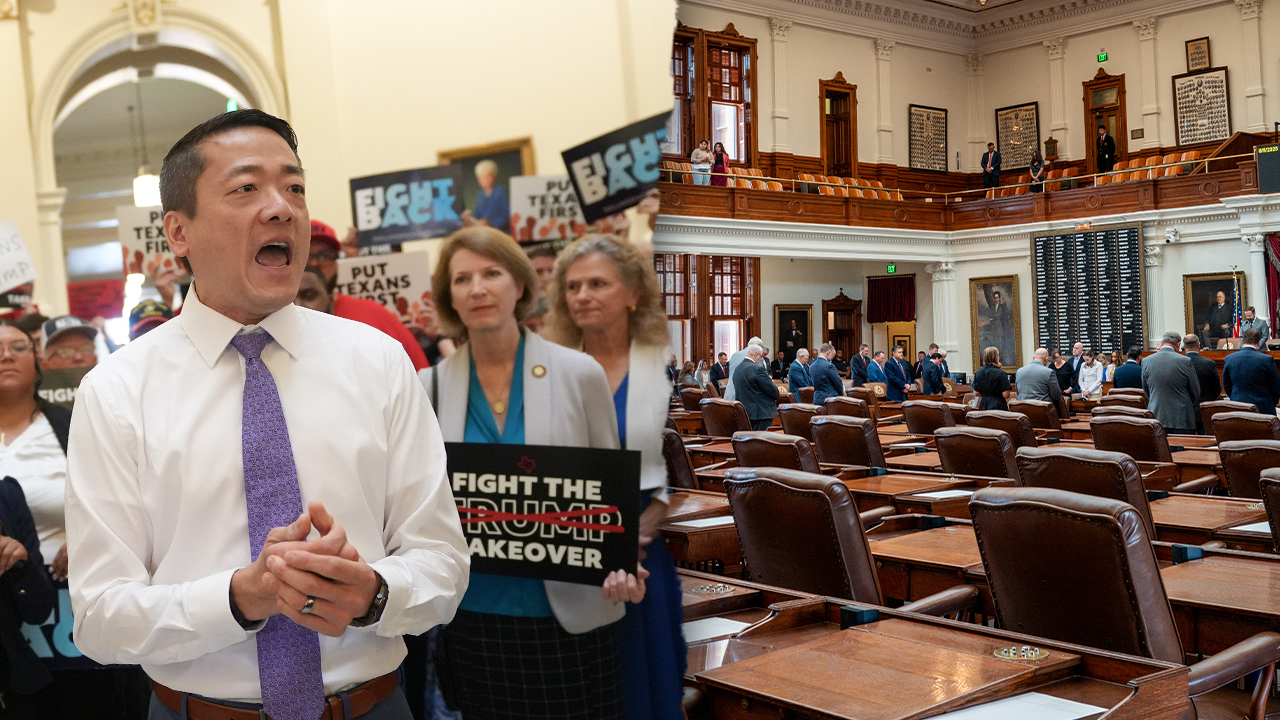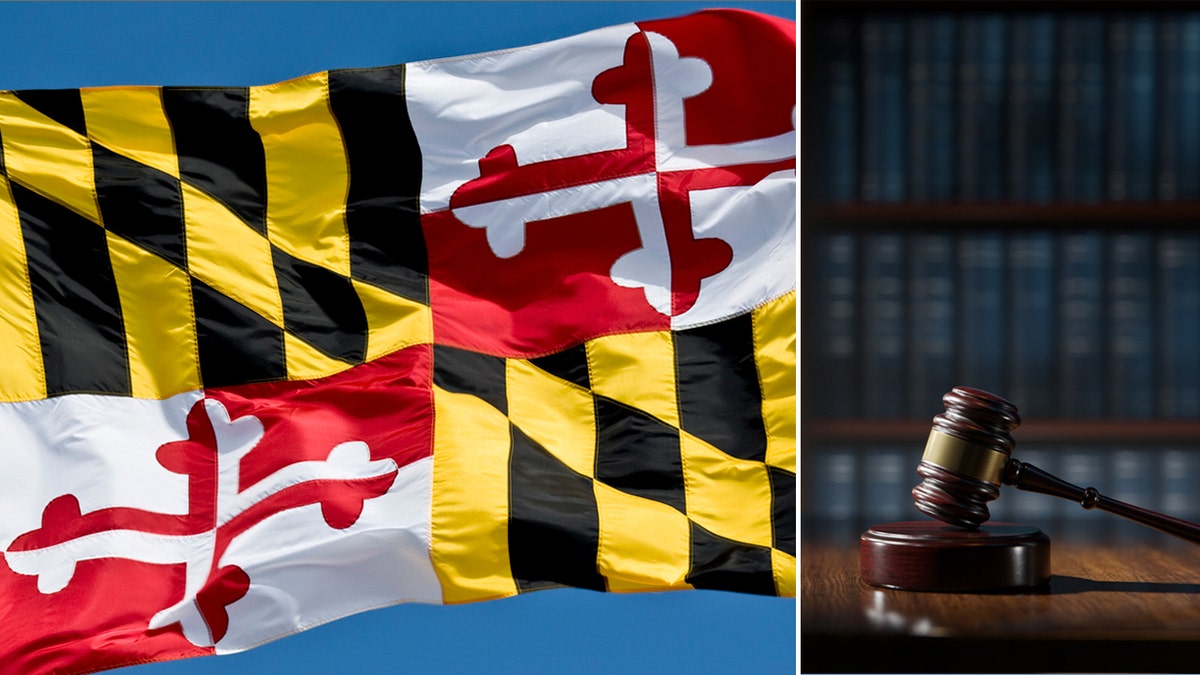
NEWYou can now listen to Fox News articles!
Democrats nationwide are supporting Texas lawmakers who fled the state to block a GOP-led mid-cycle redistricting vote — a sharp contrast to their stance a decade ago, when Maryland Democrats faced little criticism for a plan that nearly wiped out every Republican congressional seat.
After the Old Line State lost a congressional seat in the 2010 census, Annapolis was tasked with drawing new lines for the now-eight remaining, and then-Gov. Martin O’Malley ultimately testified about his eagerness to box-out the GOP.
While overwhelmingly Democratic, Maryland features conservative strongholds at its geographic extremes — the Western Panhandle and Eastern Shore — and a smattering of Republican-majority communities throughout the more densely-populated center of the state.
One of the newly-drawn seats — the 3rd District represented by then-Rep. John Sarbanes, D-Md., — resembled what Fourth Circuit federal Judge Paul Niemeyer called a “broken-winged pterodactyl, lying prostrate across Maryland.”
‘BUTTER KNIFE TO A GUNFIGHT’: DEMOCRATIC LAWMAKER RIPS HIS PARTY’S STRATEGY IN REDISTRICTING BATTLE
The former map of Maryland’s 3rd congressional district (Wikimedia Commons via University of Maryland-Baltimore County)
Appearing to painstakingly connect some of the state’s wealthier suburban communities while steering clear of inner-city Baltimore and the military installation at Fort George Meade, the district had the rare distinction of being one that a person would be unable to drive across.
It began along I-795 northwest of Baltimore, curved east to form a thread-thin line across the city’s northern border, drew in some northeastern suburbs before returning to linear form southward and again widening to encompass Inner Harbor and suburbs Halethorpe and Arbutus.
At one point near US-1 in Elkridge, someone could walk for a few minutes and enter three different congressional districts, including the 3rd as it traversed Ducketts Lane.
The “pterodactyl” then swung southwest to form its “body” north of Washington, D.C., before boomeranging into a different part of Howard County than it had just passed through — then shifting south again to trace the disconnected coastline of the Patapsco River and Chesapeake Bay.
Tucked in between Elkridge and Glen Burnie, a distance of only a few miles, was a tendril of another congressional district, the 2nd, otherwise centered east of Baltimore City.
Between Gibson Island and Annapolis, the “pterodactyl” 3rd crossed peninsulas and islands that precluded people from being able to traverse its entire length without crossing water, while narrowly separating the waterway from another district anchored closer to Washington.
HOUSE DEMS REVIVE ‘FOR THE PEOPLE ACT’ WHICH MCCONNELL ONCE CALLED DEMOCRATIC POLITICIAN PROTECTION

State flag of Maryland, left, gavel, right. (Getty)
The third district drew nationwide infamy but was staunchly defended by Maryland Democrats at the time, as they sought to draw out any congressional Republican they could.
Previously, Maryland Democrats shifted the boundaries of suburban D.C. districts in 2002 to help force out the last Beltway-area Republican congresswoman, Rep. Connie Morella. That area is now represented by Rep. Jamie Raskin, D-Md.
The 2010 decennial redraw that created the 3rd also sought to boot the rest of the GOP delegation, and eventually succeeded in making it halfway.
Then-Rep. Roscoe Bartlett, R-Md., an eccentric octogenarian who leaned conservative and represented the Western Panhandle’s rural, blue-collar expanse, saw his district shifted to include very liberal, white-collar D.C. suburbs along I-270.
The entrenched now-99-year-old lost the following election to Democrat John Delaney by nearly the amount he won his previous race by, and moved far into West Virginia and settled off the grid.
HERITAGE FOUNDATION SCHOLAR BREAKS DOWN ‘ABSURD’ FEDERALIZATION OF ELECTIONS IN DEMOCRATS’ BILL

Then-Rep. Roscoe Bartlett, R-Md. and President George W. Bush. (Reuters)
Rep. Andy Harris, the House Freedom Caucus chair and last remaining congressional Maryland Republican, remained — but not because his presence was missed.
As the Atlantic reported at the time, Maryland Democrats drew up a “7-1” map after the 2010 census, in hopes of booting Bartlett, but also briefly theorized an “8-0” map that would have forced Harris out.
The prospect of stretching safe Democratic districts too thin in hopes of swapping out the staunch conservative in the state’s largest district by size proved too much of a risk, the outlet reported, noting concerns about even worse-looking district lines criss-crossing the Bay.
But, after the latest redistricting that proverbially killed the “pterodactyl” and other squiggly districts scrutinized in the lawsuit, Harris said it was clear his 1st District was again becoming more competitive.
“The Democrats can’t defeat me at the ballot box so they’re going to defeat me on the gerrymander vote, or at least they’re going to attempt to,” he told WYPR.
In a 2017 deposition amid a lawsuit over Maryland’s map, O’Malley admitted to seeking Bartlett’s ouster or better: “That was my hope.”
He worked with Maryland’s Democratic legislature to craft such a map.
“It was my intent to create… a district where the people would be more likely to elect a Democrat than a Republican.”
Bartlett said at the time he wanted to work with O’Malley to create a fairer map that also avoided racial gerrymandering around Washington.
The Washington Post repeatedly bashed the gerrymandered map, being one of the first to report the judge’s “pterodactyl” moniker.
“Democratic Party leaders went overboard in carving up territory so that Democratic votes would be deployed to maximum advantage, even if it meant stitching them into districts resembling violently spilled coffee,” one 2012 editorial read.
After leaving office and taking the reins at the DNC for a time, O’Malley struck a more critical tone against gerrymandering, telling a group at Boston College in 2017 that “we must, on a state-by-state basis push for an end to gerrymandering…”
He also acknowledged his own history, remarking, “I held that redistricting pen in my own Democratic hand. I was convinced that we should use our political power to pass a map that was more favorable for the election of Democratic candidates.”
